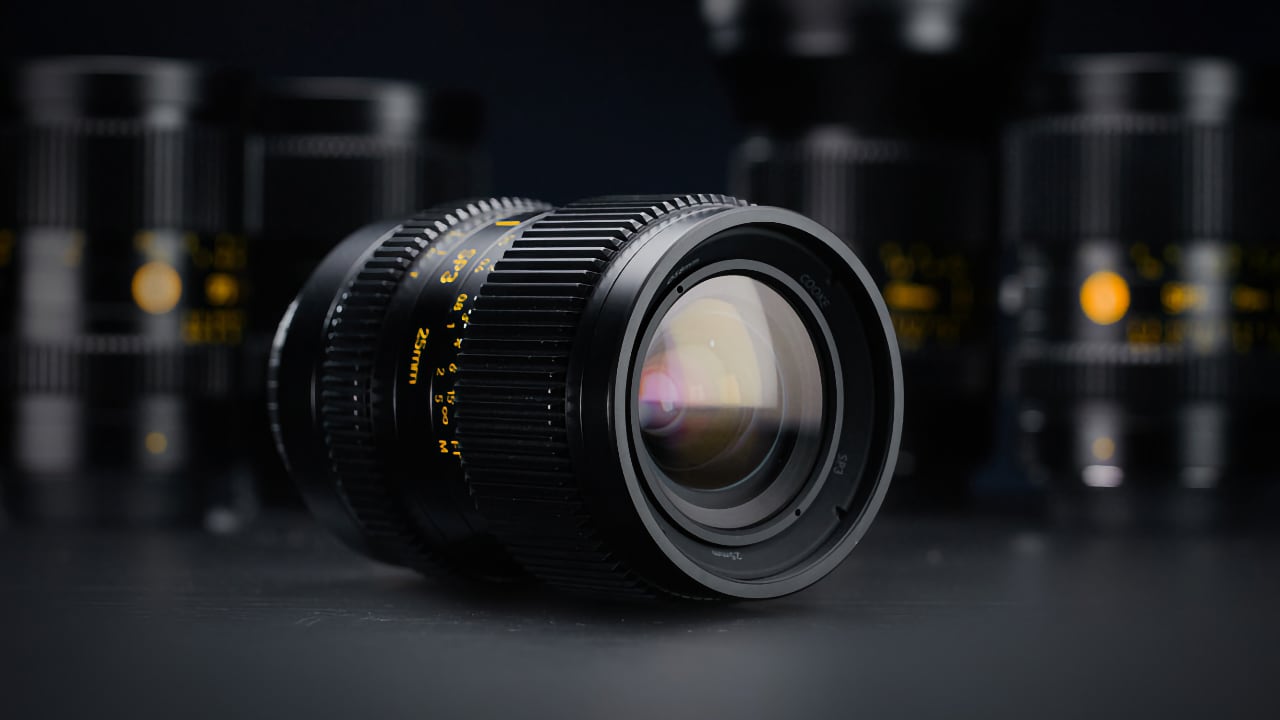
Cooke’s newly-announced $4k SP3 lenses can be pretty fairly summarised as five Panchro /i Classic full-frame lenses repackaged for mirrorless mounts.
Lenses which place their elements really close to a camera’s sensor have significantly improved performance over otherwise comparable designs which don’t. That’s been a fairly well-understood reality for a while, especially since mirrorless stills cameras and motion picture cameras with electronic viewfinding became normal. It’s a reality which provoked the development of the LPL mount for cinema cameras, although LPL isn’t actually that shallow; at 44mm, it actually matches EF, a mount designed for stills cameras with mirror boxes.
What has all this to do with Cooke? Well, in the sunlit uplands of 2023, when we can throw a Sigma FP on a tiny drone and get all Michael Bay with it, it’s almost trivial to put a big chip on a tiny aircraft and pull the kind of Gs that would black out Tom Cruise on a good day. The problem is that the FP might weigh less than fifteen ounces, but some full-frame cinema glass weighs almost four times that, not including the mount adaptor, which isn’t going to do anything for the endurance of our quad-rotored camera platform. Worse, in that situation, we’re not even taking advantage of the FP’s short flange focal distance, which is a shame.
The Panchro repackaged
This is perhaps part of the thinking behind Cooke’s newly-announced SP3 series, which can be fairly summarised as five of the Panchro /i Classic full-frame lenses repackaged for mirrorless mounts. We’re working from a press release, here, but it specifies that E, RF, L and M mounts are to be available, with the RF expected soon after launch and the M early next year.
There are some realities to confront here: on a visit to Cooke’s famous Leicester works a few years ago, discussion with the people involved made it clear that making an absolute blow-by-blow recreation of the classic Speed Panchros has never been possible because of restrictions on the types of glass which are now available, hence the staggering value of extant, real Speed Panchro sets. The original design wasn’t designed to cover full frame, either. Some rehousings will sort of do it, depending on the cinematographer’s appetite for the really interesting parts of the glass. Anyway, all of the modern Panchro reissues are inevitably based on at least a partial reformulation.
Still, the optical designers at Cooke have long demonstrated an impressive level of control over exactly the sort of optical behaviour that attracts people who are shooting cosmetics commercials and costume dramas. The company’s output has included everything from giant anamorphics to, now, the diminutive SP3s, and maintained its trademark golden glows throughout the range. Released stills suggest that the SP3s have been designed to do just the same.
Pricing and more
Perhaps predictably, given the maker’s mark on the lens barrel, these are not intended to put the manufacturer into competition with mainstream mirrorless lens manufacturers. The pricing is cinema lens money, around $4k per lens. The set of five, cased, goes for over $21k, and they’re not even electronically active lenses with servos, so they’re not going to be very friendly for stills people. That’s not their purpose, sure, and the single-camera drama specialists at whom these lenses are targeted will probably still sneer at electronic lenses. Still, there’s perhaps a general point to make here about the emergence of really competent autofocus, and the need for lenses with internal focus servos. Perhaps it’s time for high-end cinema glass to start recognising the fact that autofocus now has a place at many levels of production.
Actually implementing that would demand a pretty large amount of research and development in a field of electromechanics which companies like Cooke have often barely touched before, and achieving compatibility with all the cameras these lenses could meet might make universal servo focus compatibility an insane and impossible desire. Still, it’s a thought. As it is, the five lens range has consistent focus and iris gear positions and nonlinear travel for both rings. At 160 degrees, the focus travel is actually fairly limited for a cinema lens, which might be a recognition that practically all applications will use electronic remote focus, with the potential for scale expansion, anyway.
The Cooke SP3 series is to be available in 25, 32, 50, 75 and 100mm focal lengths, all at T2.4. That’s a hair slower than the T2.2 Panchro /i Classic FFs and not lighting fast in general, especially for a lens in mirrorless mount which, as we’ve said, generally makes faster designs smaller and easier to build. To some extent this is a concomitant of deliberately retro designs. Sigma’s uncoated classics are noticeably slower than the coated versions, (thus the purpose of coatings). It’s also a consequence of the clear intent to keep the new range small and light; to get an idea of scale, consider the screw-in filters are only 58mm in diameter on everything up to the 75mm (the 100mm is a bit bigger in all dimensions).
On the other hand, let’s see if there’s anyone on the planet who wants to try to pull focus on a full frame camera at 100mm on a drone at the sub-2 apertures that are apparently a sine qua non of camerawork at the moment. Raise your hand. Nobody? Fine.
Tags: Production Lenses


Comments